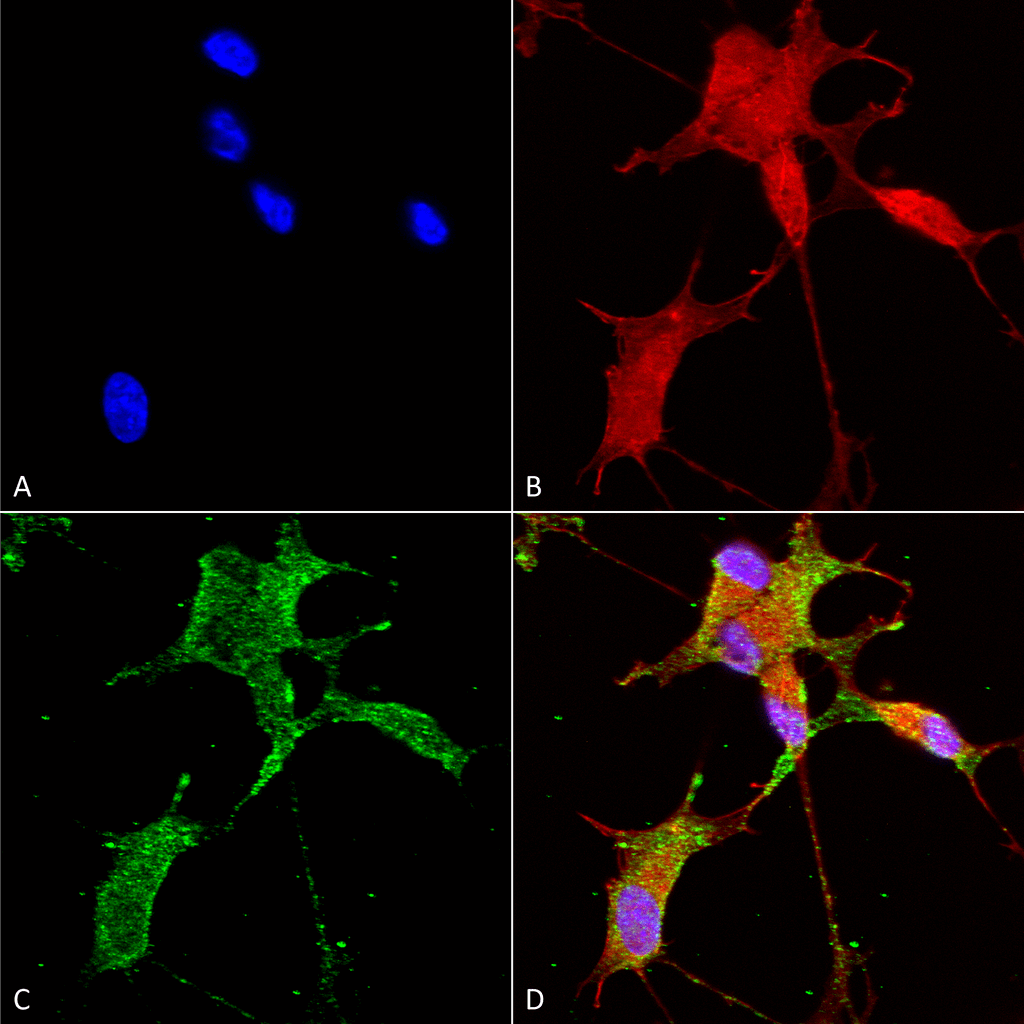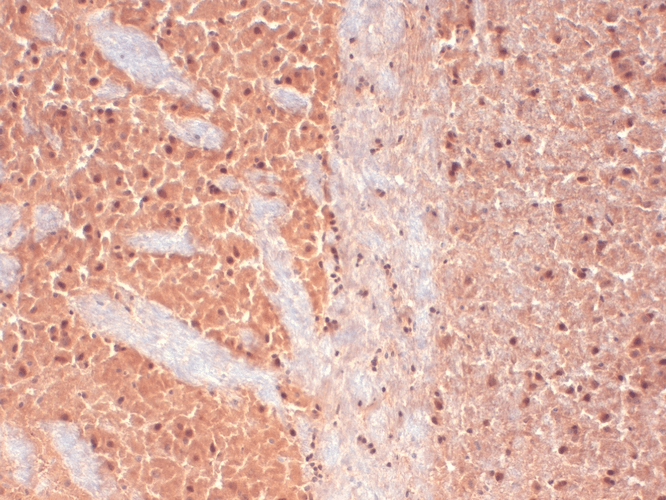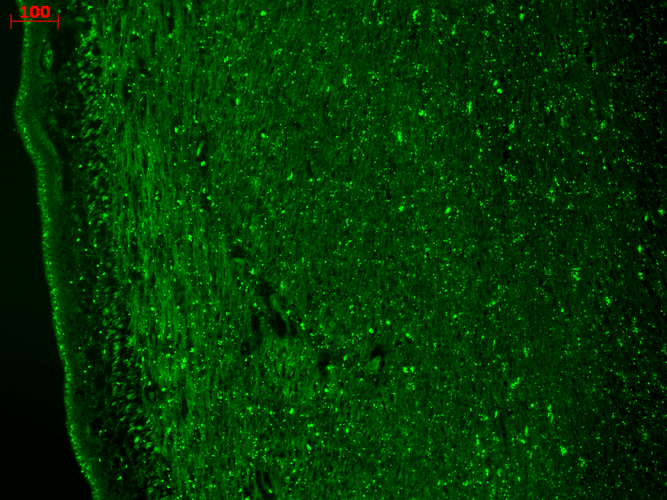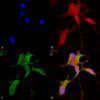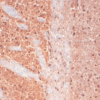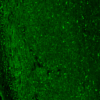Anti-Cav3.2 Ca+2 Channel Antibody (11505)
$466.00
| Host | Quantity | Applications | Species Reactivity | Data Sheet | |
|---|---|---|---|---|---|
| Mouse | 100ug | WB,IHC,ICC/IF,IP,AM | Human, Mouse, Rat |  |
SKU: 11505
Categories: Antibody Products, Ion Channel Antibodies, Products
Overview
Product Name Anti-Cav3.2 Ca+2 Channel Antibody (11505)
Description Anti-Cav3.2 Ca +2 Channel Mouse Monoclonal Antibody
Target Cav3.2 Ca+2 Channel
Species Reactivity Human, Mouse, Rat
Applications WB,IHC,ICC/IF,IP,AM
Host Mouse
Clonality Monoclonal
Clone ID S55-10
Isotype IgG1
Immunogen Fusion protein corresponding to aa 1019-1293 (II-III loop)
Properties
Form Liquid
Concentration Lot Specific
Formulation PBS, pH 7.4; 50% glycerol, 0.09% sodium azide.
Buffer Formulation Phosphate Buffered Saline
Buffer pH pH 7.4
Buffer Anti-Microbial 0.09% Sodium Azide
Buffer Cryopreservative 50% Glycerol
Format Purified
Purification Purified by Protein G affinity chromatography
Specificity Information
Specificity This antibody recognizes human, mouse, and rat Cav3.2. It does not cross-react with Cav1.3.
Target Name Voltage-dependent T-type calcium channel subunitα-1H
Target ID Cav3.2 Ca+2 Channel
Uniprot ID O95180
Alternative Names Low-voltage-activated calcium channelα1 3.2 subunit, Voltage-gated calcium channel subunitα Cav3.2
Gene Name CACNA1H
Accession Number NP_001005407.1
Sequence Location Cell membrane
Biological Function Voltage-sensitive calcium channel that gives rise to T-type calcium currents. T-type calcium channels belong to the 'low-voltage activated (LVA)' group. A particularity of this type of channel is an opening at quite negative potentials, and a voltage-dependent inactivation (PubMed:9670923, PubMed:9930755, PubMed:27149520). T-type channels serve pacemaking functions in both central neurons and cardiac nodal cells and support calcium signaling in secretory cells and vascular smooth muscle (Probable). They may also be involved in the modulation of firing patterns of neurons (PubMed:15048902). In the adrenal zona glomerulosa, participates in the signaling pathway leading to aldosterone production in response to either AGT/angiotensin II, or hyperkalemia (PubMed:25907736, PubMed:27729216). {PubMed:24277868, PubMed:25907736, PubMed:27149520, PubMed:27729216, PubMed:9670923, PubMed:9930755, PubMed:15048902}.
Research Areas Ion Channels
Background Ion channels are integral membrane proteins that help establish and control the small voltage gradient across the plasma membrane of living cells by allowing the flow of ions down their electrochemical gradient. Cav3.2 is a protein which in humans is encoded by the CACNA1H gene. Studies suggest that certain mutations in this gene lead to childhood absence epilepsy. It has also been suggested that up-regulation of Cav3.2 may be involved in the progression of prostate cancer toward an androgen -independent stage.
Application Images




Description Immunocytochemistry/Immunofluorescence analysis using Mouse Anti-Cav3.2 Monoclonal Antibody, Clone N55/10 (11505). Tissue: Neuroblastoma cells (SH-SY5Y). Species: Human. Fixation: 4% PFA for 15 min. Primary Antibody: Mouse Anti-Cav3.2 Monoclonal Antibody (11505) at 1:50 for overnight at 4°C with slow rocking. Secondary Antibody: AlexaFluor 488 at 1:1000 for 1 hour at RT. Counterstain: Phalloidin-iFluor 647 (red) F-Actin stain; Hoechst (blue) nuclear stain at 1:800, 1.6mM for 20 min at RT. (A) Hoechst (blue) nuclear stain. (B) Phalloidin-iFluor 647 (red) F-Actin stain. (C) Cav3.2 Antibody (D) Composite.

Description Immunohistochemistry analysis using Mouse Anti-CaV3.2 Calcium channel Monoclonal Antibody, Clone N55/10 (11505). Tissue: frozen brain section. Species: Human. Fixation: 10% Formalin Solution for 12-24 hours at RT. Primary Antibody: Mouse Anti-CaV3.2 Calcium channel Monoclonal Antibody (11505) at 1:1000 for 1 hour at RT. Secondary Antibody: HRP/DAB Detection System: Biotinylated Goat Anti-Mouse, Streptavidin Peroxidase, DAB Chromogen (brown) for 30 minutes at RT. Counterstain: Mayer Hematoxylin (purple/blue) nuclear stain at 250-500 µl for 5 minutes at RT.

Description Immunohistochemistry analysis using Mouse Anti-CaV3.2 Calcium Channel Monoclonal Antibody, Clone N55/10 (11505). Tissue: hippocampus. Species: Human. Fixation: Bouin's Fixative and paraffin-embedded. Primary Antibody: Mouse Anti-CaV3.2 Calcium Channel Monoclonal Antibody (11505) at 1:1000 for 1 hour at RT. Secondary Antibody: FITC Goat Anti-Mouse (green) at 1:50 for 1 hour at RT.
Handling
Storage This antibody is stable for at least one (1) year at -20°C.
Dilution Instructions Dilute in PBS or medium which is identical to that used in the assay system.
Application Instructions Immunoblotting: use at 1-10ug/mL. A band of >260kDa is detected.Immunohistochemistry and and
Immunocytochemistry: use at 0.1-1ug/mL.
Immunofluorescence: use at 1-10ug/mL.
These are recommended concentrations. User should determine optimal concentrations for their application.
Positive control: Rat brain membranes.
Immunocytochemistry: use at 0.1-1ug/mL.
Immunofluorescence: use at 1-10ug/mL.
These are recommended concentrations. User should determine optimal concentrations for their application.
Positive control: Rat brain membranes.
References & Data Sheet
Data Sheet  Download PDF Data Sheet
Download PDF Data Sheet
 Download PDF Data Sheet
Download PDF Data Sheet

